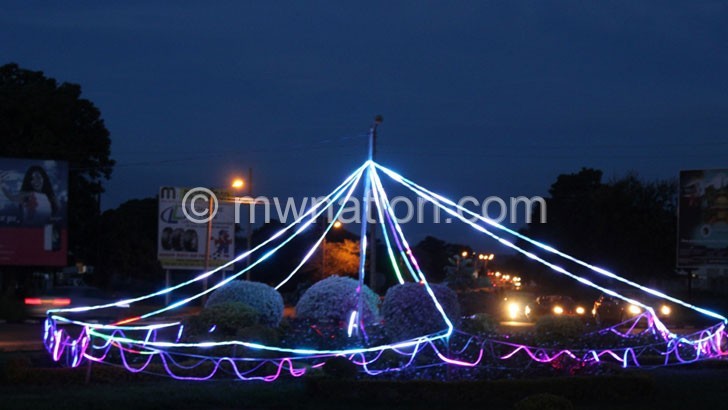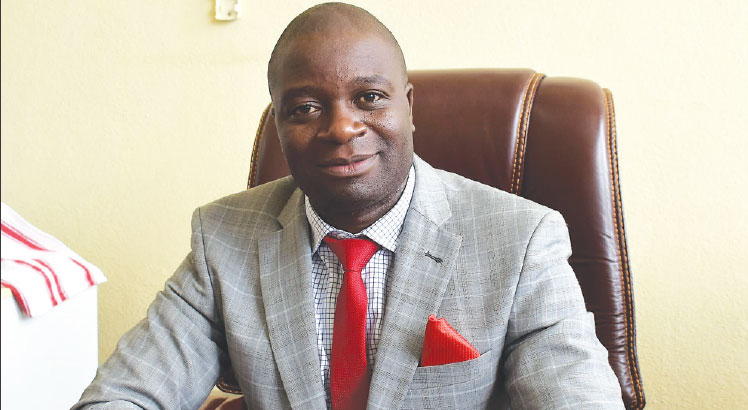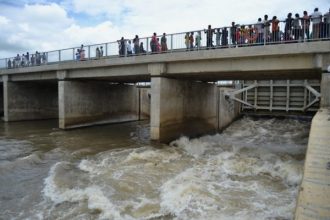No dark Christmas
There seems to be light at the end of the tunnel for local electricity users accustomed to erratic power supply in recent years with Escom pledging improved supply during the festive season.
In a telephone interview yesterday, Electricity Supply Corporation of Malawi (Escom) public relations manager Innocent Chitosi said the power utility is devising ways of consolidating the gains that have led to improved supply of electricity in the past week.

But, while acknowledging improved power supply, Consumers Association of Malawi (Cama) executive director John Kapito yesterday cast doubt on the possibility of Escom and its major supplier, Electricity Generation Company (Egenco), sustaining the situation.
In the past week, most electricity consumers have reported improved electricity supply as manifested by reduced hours of load shedding. In industrial areas such as Makata, Ginnery Corner and Maselema in Blantyre where Escom rationed supply on specific days of the week, filling the atmosphere with noise from stand-by diesel generators, consumers got a pleasant surprise last week as power supply from the national grid went uninterrupted.
The development, which has coincided with the tapping of 20 megawatts (MW) from Zambia to supply parts of Lilongwe, Mchinji and surrounding districts, has also come at a time Egenco has reported improved generation from hydro sources due to the onset of rains. Some observers have also attributed reduced production or shut down by some industries for the festive season as a contributing factor.
For close to three years, Malawian electricity consumers have endured long hours of power rationing which in 2017 hit a record 23 hours of no supply a day in many areas. Escom and Egenco said the prolonged hours were due to low water levels in Lake Malawi and its sole outlet, the Shire River, where 95 percent of the hydro-power is produced. The situation saw generation reduced to as low as 160MW from an installed capacity and demand of 350MW.
In yesterday’s interview, Chitosi said Escom has worked to sustain the gains made overtime to provide reliable power to its customers nationwide.
He said: “We have been working very hard and results are beginning to show. Last week, we released a statement where we outlined our drive to improve things. What you are seeing is a sign of better days to come.”
But Chitosi could not specifically indicate how the situation would be sustained.
And in a statement jointly issued with Egenco last week, the two companies highlighted several interventions and projects in generation, transmission and distribution of electricity power as well as the onset of rains as culminating into an improvement of electricity power availability to consumers.
The statement mentioned the completion of rehabilitation works at Nkula A Hydro Power Station under the Millennium Challenge Corporation energy compact that modernised the station and upgraded its capacity by 12MW to 36MW, Lilongwe A and Kanengo diesel generators and the 20MW tapped through interconnection with Zambia.
The statement added that hydro-power stations alone were currently generating around 230MW, thereby contributing to reduced load shedding during week days. The statement said during weekends, power rationing would be reduced to a minimum of two hours from the previous six to nine hours.
But Kapito said it would be too early for consumers to celebrate the new phenomenon.
He said: “Indeed, we have all seen the change which is very much welcome because power is very critical across all sectors. But we cannot celebrate too much on this as this could also be attributed to the closure of most industries during the festive period.
“When industry is back in full swing in January 2019, we could go back to frequent blackouts. In fact, having uninterrupted electricity should not be celebrated at all. It is the responsibility of government to ensure people have power all the time.”
In January this year, at the peak of power outages that virtually crippled industry, the Malawi Confederation of Chambers of Commerce and Industry (MCCCI) quantified that companies were spending in excess of K1.2 billion on alternative sources of power per month.
Earlier this month, President Peter Mutharika, who in November 2017 declared that blackouts would be a thing of the past “in a year’s time”, pleaded for more patience from Malawians hard-hit by power outages. The President spoke at the ground-breaking ceremony for the K51 billion (about $70 million) 60MW capacity solar electricity project in Salima by an independent power producer (IPP).
The MCC project, implemented by Millennium Challenge Account-Malawi (MCA-M), improved the legal and regulatory framework to woo IPPs, improved distribution and generation capacity and positioned the national grid for power imports and exports through new sub-stations.
In the thick of the power supply woes, the country turned to diesel generators to add an estimated 78MW to the national grid. Tedzani 3 Hydro-power Station was also scheduled to add 11MW by 2018.





